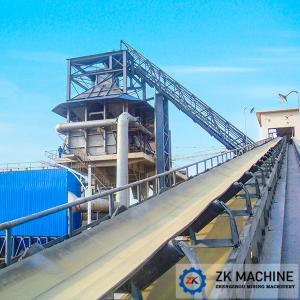

Add to Cart
It applies for conveying loose materials or parted items. According to the transporting technical requirements, it can transport with single conveyor or multi-conveyor, and can also form a horizontal or inclinated system if connected with other transporting equipments, it can meet the working lines needs of different layouts.
It possesses these merits: little noise, simple structure, easy maintenance, low energy consumption and standard components, etc. therefore, it is widely used in mining, metallurgy, chemical, foundry, building materials and other transporting industries, production lines, the hydro power station construction site and other production departments.
In the process of industrial production, it can be used as a
continuous production link among mechanical equipments, realizing
continuity and automation of the production process, enhance the
productivity and lessen the intensity of labor.
It adopts the friction transmission principle to work. It has these
features: giant transporting ability, long transporting distance,
steady transportation and there is no relative movement between
materials and the convey belt.
| Spec | Rubber belt | Length (m) | Dia. of drive drum (mm) | Max. feeding size (mm) | Capacity (m³/h) | Power (kW) | ||
| Width (mm) | Speed (m/s) | Slope (°) | ||||||
| DTⅡ-500 | 500 | 0.8~2.5 | 0~20° | 2~240 | 400,500,630 | 100 | 69~217 | 1.5~30 |
| DTⅡ-650 | 650 | 0.8~2.5 | 0~20° | 2~240 | 400,500,630 | 150 | 127~397 | 1.5~45 |
| DTⅡ-800 | 800 | 0.8~3.15 | 0~20° | 2~240 | 400,500,630 | 200 | 198~781 | 2.2~75 |
| DTⅡ-1000 | 1000 | 0.8~3.15 | 0~20° | 2~240 | 500,630,800 | 300 | 324~1622 | 7~100 |
